Nantes (FR)
The Synthetic Site Folder and Site Brief are available for free.
Please register and login to access the Complete Site Folder.
- Synthetic site folder EN | FR
- Site Brief EN | FR
- Site on Google Maps
- Back to map
Data
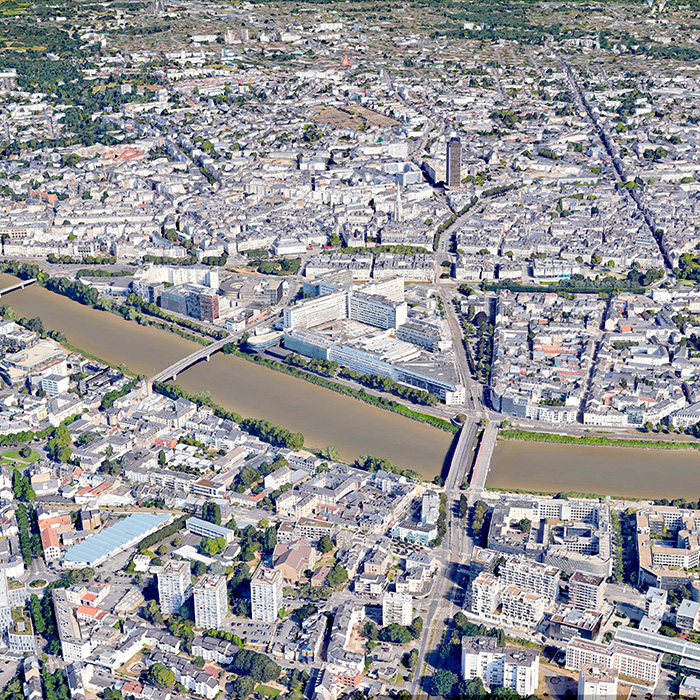
NANTES (FR)
Scales L/S
Team representative Architect, urbanist and landscape architect
Location Nantes Métropole (44)
Population 656 275 inhabitants
Reflection site 80 ha - Project site 18,4 ha
Site proposed by Nantes Métropole
Actors involved Nantes Métropole, city of Nantes, SAMOA, TER Agency
Owner(s) of the site Nantes Métropole, State, French Blood Institution, University Hospital, Univeristy of Nantes
Commission after competition Study and project missions for the development of strategic proposals, feasibility studies on the pro-ject site including the prefiguration of uses and/or the reuse of buildings, urban and/or architectural contract.
More Information
Inhabited milieu's challenges
The site of the Hôtel-Dieu is currently a mono-functional hospital-university isola, densely built and without any link with the spaces that surround it.The large scale of its buildings nevertheless makes it very visible in the urban landscape of Nantes.A veritable hospital megastructure, the Hôtel-Dieu is made up of a disparate group of buildings built between 1951 and 2013, the most emblematic of which - and the first to be built is the cross building designed by Michel Roux-Spitz, the architect of the rebuilding of Nantes.This metal- framed building with concrete facades reaches a height of 42 m and has a total floor area of 76,000 m2. The other buildings were built between the wings of the cross as medicine evolved and as the number of patients and students increased, until they reached more than 250,000 m2 of floor space. Some of them form landmark buildings that now symbolize the CHU in the same way as the cross.As a result of these years of successive extensions, the site of the Hôtel-Dieu is hidden from the flow of the city and is 95% built and waterproofed, leaving little room for living animals and plants.The soil of this block, made up of fill from the former Hôtel-Dieu destroyed during the Second World War to a depth of 3 to 6 meters, is all the more inert as most of the connections between the different departments of the hospital are made by a highly developed underground network.
The relocation of the University Hospital by 2027 to new buildings currently under construction on the island of Nantes is an opportunity to give a new program and interpretation to the hospital vo-cation of this site located on the banks of the Loire and in the heart of the city, between the city cen-ter and the island of Nantes, by opening it up to the city, its inhabitants and, more broadly, to the living beings in all its diversity.
Questions to the competitors
The central and strategic position of the Hôtel-Dieu site, as well as its special link to the Loire, lead to two types of ambitions that seem contradictory. On the one hand, renaturation and the creation of a nourishing park can be important levers for reconstituting a resilient inhabited environment that is likely to encourage a certain form of biodiversity in the city in relation to the «Loire at the heart» urban development project, which includes the redevelopment of the banks of the Loire and the Petite-Hollande park square.
On the other hand, the heritage value of the buildings (including the monumental cross-shaped building, which has been designated as a 20th century heritage site) and the city’s commitment to land conservation mean that the resources of the site must be used to the best advantage in order to develop new ways of living and wor- king in the city and to establish a diversity of activities. So how can we «make do» or «start from» this complex and heterogeneous heritage, while at the same time working towards the development of a healthier, more open and richer living environment, on the scale of the site as well as on the scale of the metropolis? How can we recover fertile, living, nourishing soil, but also active soil, public or common spaces, vectors of exchanges and encounters? What dialogue should be established with the Loire and how can the site participate in the restoration of ecological continuity on the scale of the greater area?
Finally, where to start, which spaces to give access to first? How can the reconversion of the site be initiated and allow its re-inhabitation almost immediately after the departure of the University Hospital? In what ways should the site be used and to what ends? The scale of the site and the interweaving of its infrastructures imply the implementation of agile and skilful reinvestment strategies, beyond the current experiments in transitional or prefiguration urbanism, and which make it possible to rediscover comprehensible scales of project. How does this reinvestment fit into a short, medium and long term transformation project for the site?
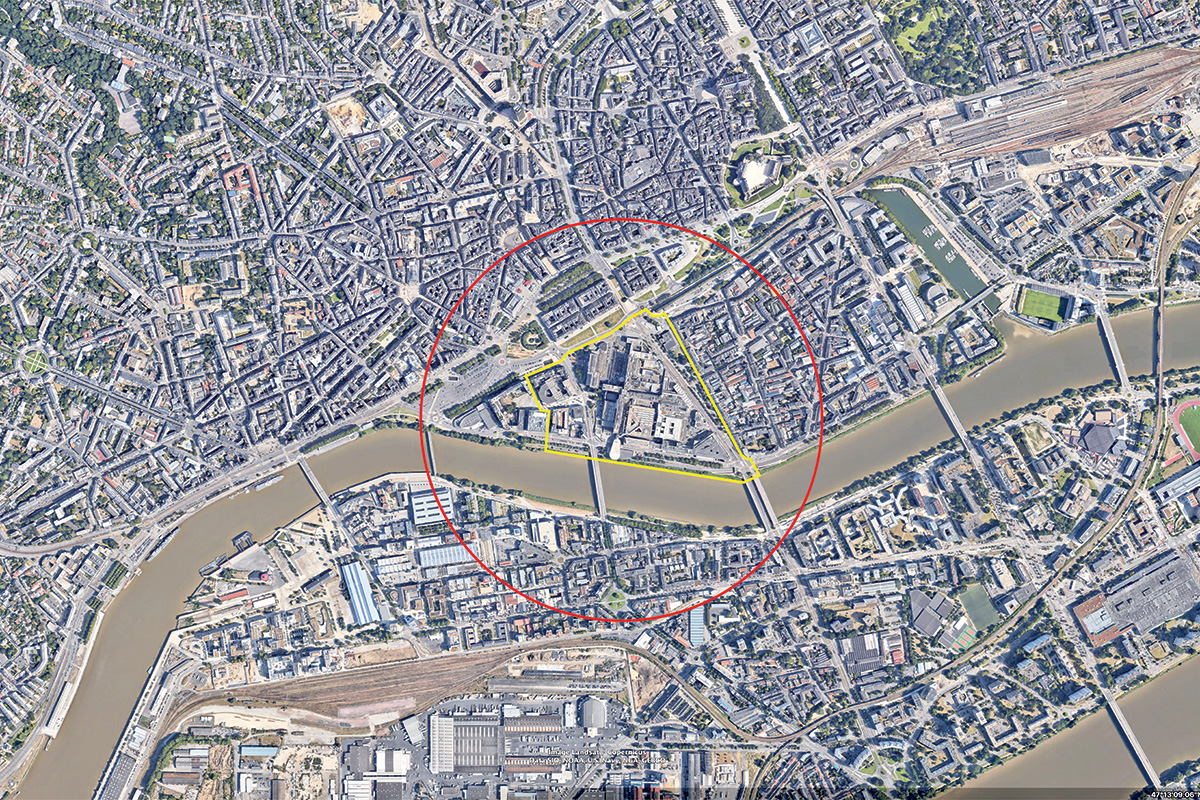
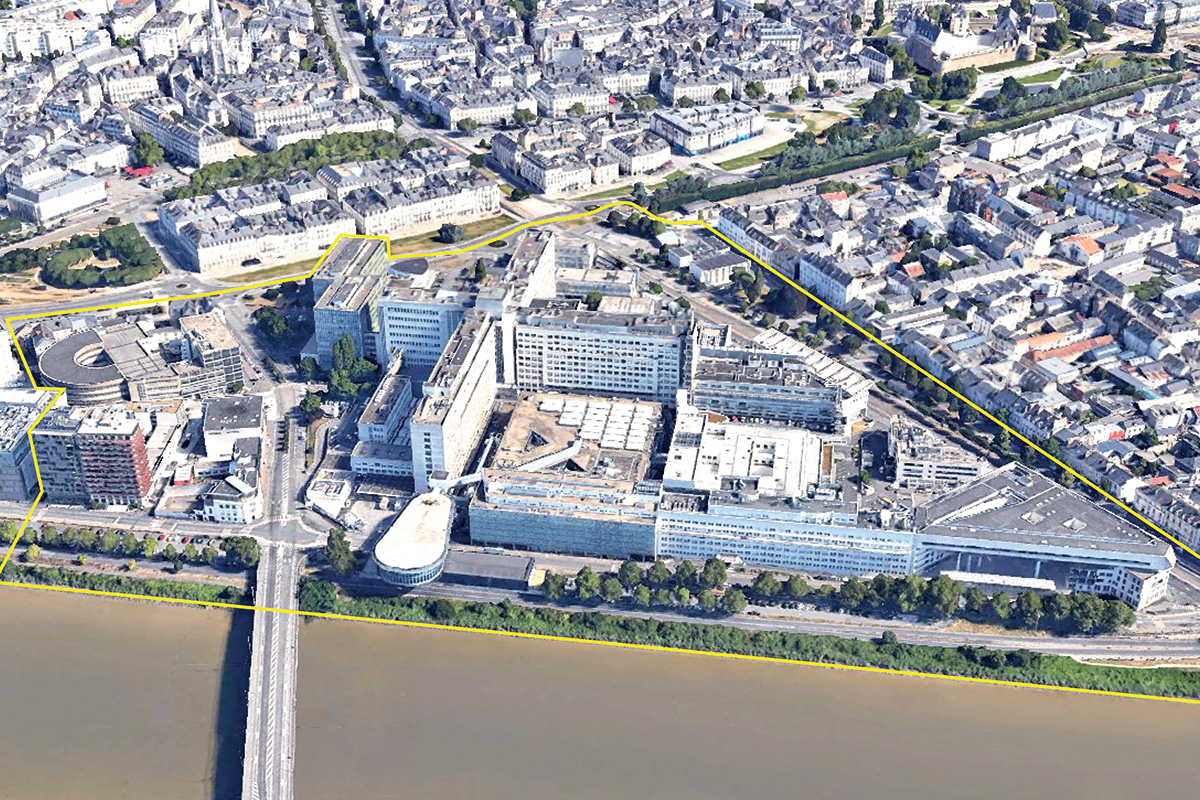
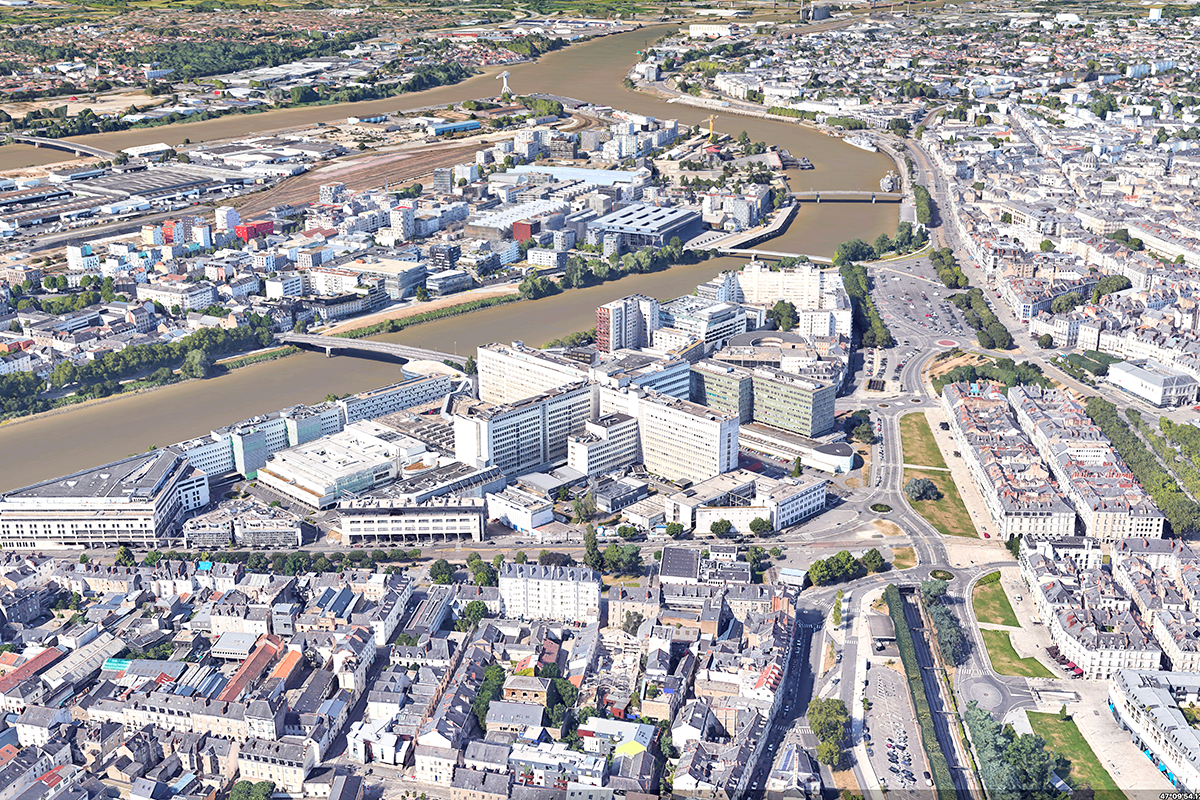
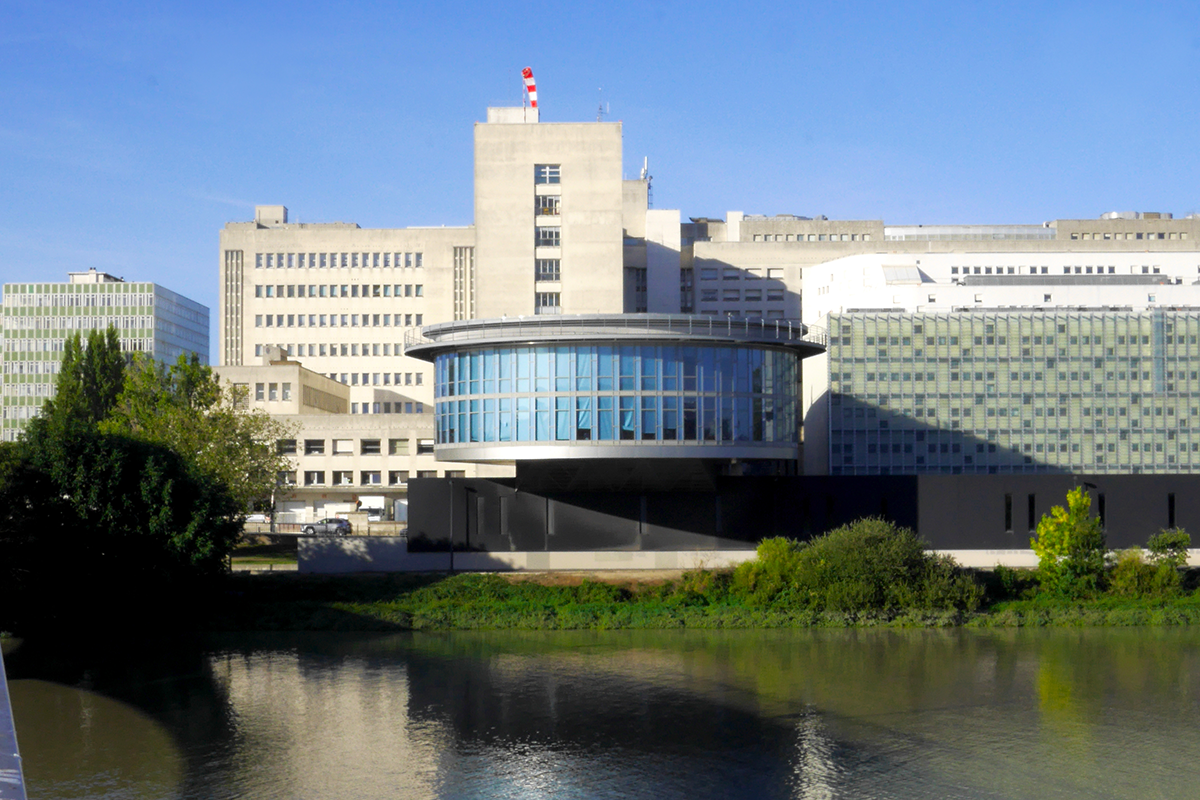
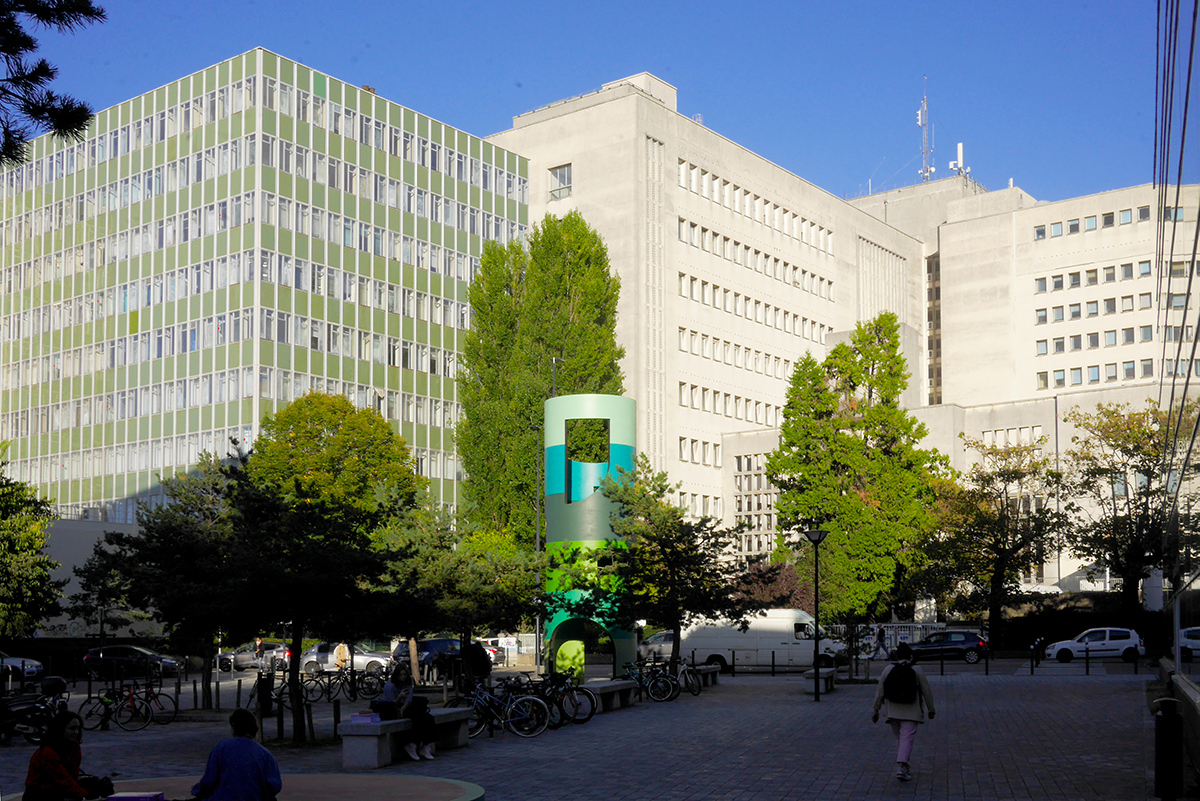
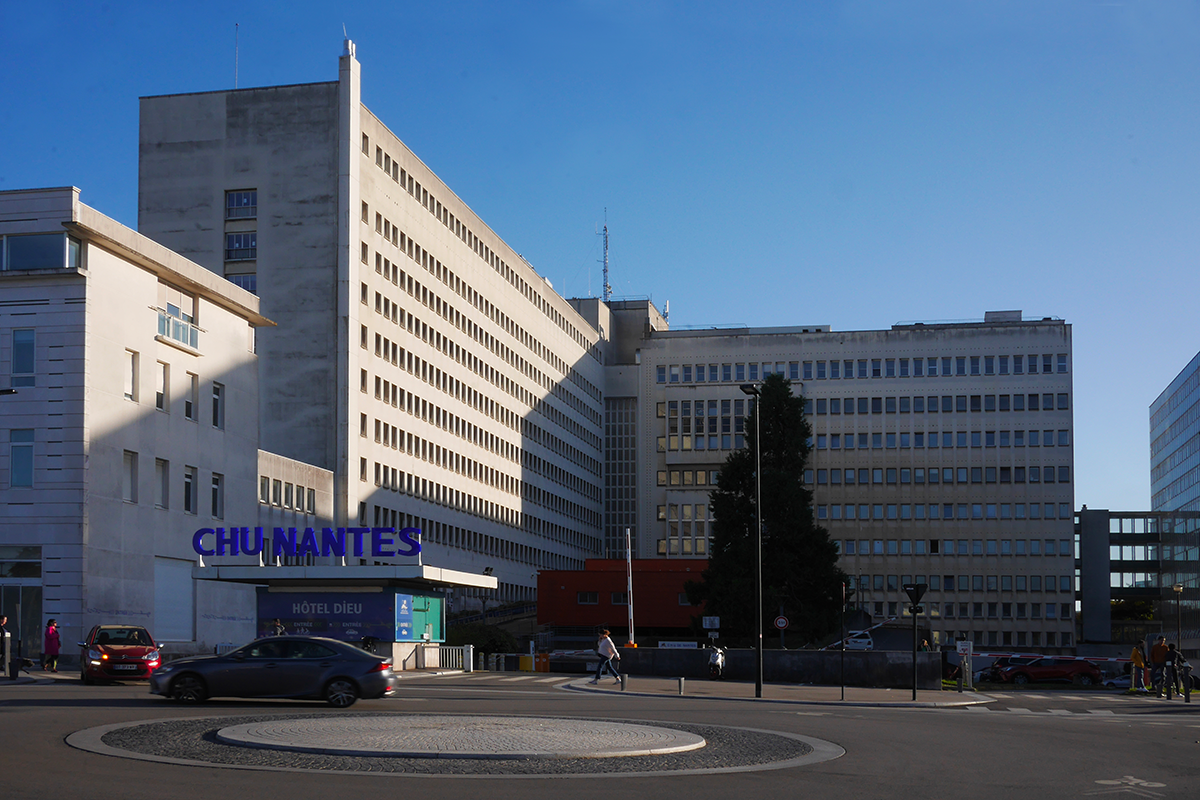
Questions on the site
Hello, Would it be possible to obtain a 3D model of the existing buildings? Thank you in advance.
Regarding questions about 3D, we only have the file in New docs after launch, in the complete site folder.
There is no additional 3D.
Hello, would it be possible to get the 3D file of the CHU from the TER agency (the one visible on the Brief - FR-NANTES-T-FR - page 36)? Kind regards,
Request in progress
Hello, is it possible to have the 3D of the complete site and its surroundings? Thanks in advance
Regarding questions about 3D, we only have the file in New docs after launch, in the complete site folder.
There is no additional 3D.
Hello, following the visit to the site on 05/05, is it possible to have, as indicated at the end of the visit: the mobility scheme and the main data on expected flows? Thank you in advance.
See New docs after launch, in the complete site folder, new elements have been submitted:
- Master plan of cycle routes
- Map of new tramway lines
- A diagram of light vehicle traffic flows around Hôtel-Dieu
- A map showing lane hierarchies by 2027
Hello, Could you specify the degree of protection of the Label XXe siècle for protected buildings? What constraints does this impose? total preservation? partial preservation? authorized intervention outside? etc.? Thank you
The "Patrimoine du XXe siècle" label, created in 1999, is now called " Remarkable Contemporary Architecture ", since the law of July 7, 2016 relating to the freedom of creation, architecture and heritage. This label identifies buildings, architectural units, works of art or a development less than 100 years old, which are remarkable but not protected as Historic Monuments.
The aim of this label is to show the interest of recent constructions that anyone can live in and visit, to make the link between old heritage and current architectural production, to encourage their reuse by adapting them to the expectations of inhabitants (ecological, memorial, societal, economic....
This label does not generate any public utility servitudes governing the restoration, modification or demolition of the property. Work projects simply need to be notified to the DRAC. However, this label constitutes an initial recognition of their heritage value, which may eventually lead to partial or total registration as a Historic Monument.
Candidates in the Europan 17 competition are therefore free to intervene on labelled buildings as they wish, while justifying the spirit of their intervention.
Hello, I'm contacting you regarding the 3D download for the Nantes site. It seems to lack information (cross-sections, openings, etc.) compared with the "FR-NANTES-TA1" PDF, which contains detailed volumes, giving us all the building heights. Is it possible to send us the 3D with these elements?
We make the request again.
In progress
Can you send us the sections and facades of the existing buildings? The 51N4E file indicates that they are in possession of these documents. We believe that these documents would help us to understand the site. Thank you in advance.
Request in progress
Hello, is it possible to obtain the reports relating to the diagnosis of ecological continuity and the Green Star projects (cf: the Nantes Valleys p.20 of the Brief). We look forward to hearing from you. Have a nice day!
Request in progress
Hello, Can you send us the plans of the university? Thanks in advance
Request in progress with the University's Property Management Department
Is it possible for you to provide a model of the topography and/or contour lines?
The 3D document already transmitted (available in New docs after launch in the complete site folder) is the only volumetric document we have at our disposal.
Is it possible for you to provide a 3D model of the surrounding area? The already uploaded .3dm file doesn't include the surroundings as 3D geometry, but it seems like they used to be in the file since there are Make2D curves of the neighbourhood.
The 3D document already transmitted (available in New docs after launch in the complete site folder) is the only volumetric document we have at our disposal.
Are there any specific functions that are needed in the neighbouring area? Anything that the neighbouring districts need or wish for?
The Hôte-Dieu site is located in the city center and at the heart of the metropolis. The sector is characterized by a very rich and varied range of programming.
The local authority would like to see mixed-use programming so that the Hôtel-Dieu becomes a lively place open to all.
Apart from the programmatic avenues mentioned in the dossier, no specific needs have been identified to date.
Are there any sections of the site available in a vector format?
The RDC of the site has already been sent to you in .dwg format (in the complete site folder or in New docs after launch, where new files requested after launch are deposited), in addition to all the levels of Hôtel-Dieu. For the Faculty of Medicine, the dwg and pdf plans of the Nantes Faculty of Medicine and Dentistry are available in the New docs after launch folder, in the complete site folder.
Hello, We would like to know if it is possible to provide sections in dwg format of the existing buildings and land. Thank you in advance
The 3D document already transmitted (available in New docs after launch in the complete site folder) is the only volumetric document we have at our disposal. It contains information on the dimensions of each building on the site.
Hello, would it be possible to have the 3-dimensional plans as they appear in the diagnostic documents from the Ter agency?
The 3D document already transmitted (available in New docs after launch in the complete site folder) is the only volumetric document we have at our disposal.
Is it possible to have a cross-section of the Croix and Medical School buildings to give an indication of their floor heights?
The 3D document already transmitted (available in New docs after launch in the complete site folder) is the only volumetric document we have at our disposal.
Would it be possible to have a cross-section of the site and buildings?
The 3D document already transmitted (available in New docs after launch in the complete site folder) is the only volumetric document we have at our disposal. It contains information on the dimensions of each building on the site.
This site is connected to the following theme
IMAGINE A SECOND LIFE! A Second Life! is a metamorphosis of a situation. The challenge is to regenerate and to support spaces in need of transformation from a new perspective towards the pre-existences and the hidden treasures that are already there. A new revalorization of all kind of resources – natural, heritage, energy, flows, economy, social… It means to reconsider uses and new proximities linking ecological and social dynamics. How to be attentive and welcoming to differences and vulnerabilities nourished by inhabited milieus facing climate change?
Transforming neighbourhoods and buildings towards an inclusive milieu
Questions on the site
You have to be connected –and therefore registered– to be able to ask a question.
Fr. 16 May 2025
Deadline for submitting questions
Fr. 30 May 2025
Deadline for answers
Before submitting a question, make sure it does not already appear in the FAQ.
Please ask questions on sites in the Sites section.
Please ask questions on rules in the Rules section.
If your question does not receive any answer in 10 days, check the FAQ to make sure the answer does not appear under another label or email the secretariat concerned by the question (national secretariat for the sites, European secretariat for the rules).